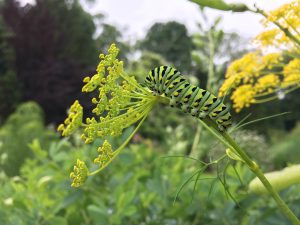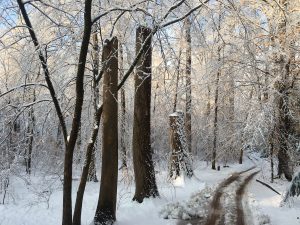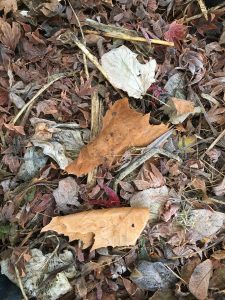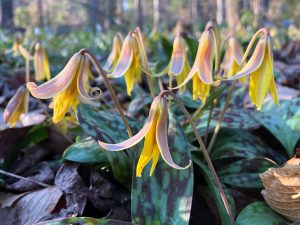Garden Sanctuary
Photos by Chris Fehlhaber and Lisa RoperTake these simple steps to create a wildlife habitat in your home garden.
Many of us turn to our gardens as places of sanctuary—to escape from daily stresses, relax and reconnect with the natural world.
Chanticleer and the other 37 public gardens in Philadelphia, America’s Garden Capital, provide escape for millions of guests annually. These gardens also provide sanctuary of another sort, habitat for the wildlife that enriches all our gardens and lives.
For much of our recent gardening history, we have primarily gardened for ourselves, often unknowingly at the expense of wildlife. But if we’re to have the pollinators, birds and other creatures we hold dear, we must consider their needs as well as our own and create a home for them in our gardens.
Here are some simple steps to take to help that cause.
Providing Habitat
 The hallmarks of a healthy habitat are food, water and shelter, and all should be present in your home garden.
The hallmarks of a healthy habitat are food, water and shelter, and all should be present in your home garden.
A top source of food for insects comes in the form of native plants. Native plants are essential as they provide a larval food source for native caterpillars. These caterpillars, in turn, provide a food source for birds and other wildlife. Non-invasive, non-native plants may provide nectar for generalist pollinators, but very rarely do these plants act as larval food sources. Native plants are a better choice for your garden.
Water, particularly a consistent source of running water, is also essential for birds and wildlife throughout the year, whether during a summer drought or winter freeze. A simple heated birdbath with a bubbler added to your garden can meet the needs of countless animals.
 Shelter comes in many forms—from leaves to deadwood. A simple pile of brush provides nesting opportunities for insects and subsequently food and cover for the birds that eat them. Salamanders also appreciate this type of cover during the winter.
Shelter comes in many forms—from leaves to deadwood. A simple pile of brush provides nesting opportunities for insects and subsequently food and cover for the birds that eat them. Salamanders also appreciate this type of cover during the winter.
Standing deadwood provides many benefits especially for saproxylic insects—those that require deadwood to complete their life cycle.
Birds and bats will also seek shelter in soft standing deadwood. The pileated woodpecker (the large bird with the famously red head), for instance, requires standing deadwood as part of its habitat.
Thinking of your garden in layers is a great way to maximize the habitat it can provide. Layers include, starting from the top, the canopy, understory trees and shrubs, lower perennials and grasses, and finally a groundcover layer comprised of sedges, other shade tolerant plants and spring plants.
Gardening Practices
“Cleanliness is next to godliness” is a phrase many gardeners take to heart. Throughout the year we rake, prune, trim, mow and blow to tidy up what we mistakenly refer to as “yard waste.” Nature, however, does not create waste, only opportunity and abundance.
Plants have evolved to live in their own litter. Consequently, leaves and debris from prior seasons act as a natural fertilizer for the plant and provide habitat for insects and birds that have all co-evolved together.
So, take a break from some of your gardening chores.
Leave the Leaves
 Despite the term “leaf litter,” leaves are not litter in a conventional sense, but an invaluable resource for gardens and wildlife. Many pollinators, beneficial insects, reptiles and amphibians use the leaf layer for hibernation and overwintering as the layer of leaves protect and insulate the soil from winter weather, along with providing camouflaging cover through the cooler months.
Despite the term “leaf litter,” leaves are not litter in a conventional sense, but an invaluable resource for gardens and wildlife. Many pollinators, beneficial insects, reptiles and amphibians use the leaf layer for hibernation and overwintering as the layer of leaves protect and insulate the soil from winter weather, along with providing camouflaging cover through the cooler months.
Most butterflies and moths overwinter under the leaf layer. Swallowtails and Luna moths overwinter as chrysalides disguised as or wrapped in leaves, while morning cloak butterflies hibernate under the leaf layer as adults.
Many beneficial insects including ladybugs, assassin bugs, firefly larvae and many native bees also overwinter in the leaf layer or soil burrows, making their homes with frogs, toads and salamanders.
Cut Back on the Cutback
Leaving plants partially or fully up over the winter provides food and habitat for insects and other animals plus beautiful structure for your garden design. Resist the urge to cut back all spent plants at the end of their blooming season.
Perennials with persistent seeds feed overwintering birds, such as chickadees. Perennials and grasses with hollow stems—such as asters, coneflowers and goldenrods—allow many insects to overwinter inside them.
Partially cutting back such plants to one to two feet tall in the fall allows access to the hollow pith for beneficial insects including native bees, to overwinter as eggs, pupae or adults.
Patience
 Patience is one of the top lessons in gardening.
Patience is one of the top lessons in gardening.
As spring awakes, we’re all eager to get back into our gardens. Yet much of the overwintering wildlife has yet to wake up. Cutting back the remaining plants too early removes overwintering insects. Spreading fresh mulch in your garden can smother wildlife overwintering in the soil or under the leaf layer.
Like us, wildlife wants to wait until the weather becomes more favorable to start the new season. It’s best to wait until daytime temperatures are consistently above 50 degrees before starting your spring cleanup and gardening.
Maximizing the diversity in your home garden creates more opportunities for wildlife. It also enhances functional diversity, providing a variety of sources for food, water and shelter throughout the year so the needs of wildlife are always met.
With a little thought and practice we may create gardens that are sanctuaries for all.
Chanticleer has been called the most romantic, imaginative and exciting public garden in America. It’s a garden of pleasure and learning, relaxing yet filled with ideas to take home. The staff welcomes visitors to observe the garden and ask questions when they see someone tending an the garden. Open through October 31st, Wed.—Sun., 10 to 5, reopening March 30, 2022.
786 Church Rd., Wayne. Learn more at ChanticleerGarden.org.
